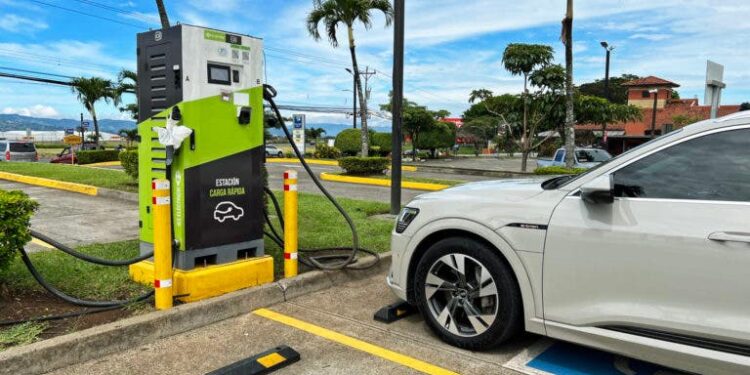In 2022, Costa Rica retained its leadership position in the Latin American region for electric light passenger vehicles (cars, sport utility vehicles, and pickup trucks) with a record market share of 7.3%. This was higher than the market shares achieved in Canada (6.1%) and the United States (5.3%). When accounting for sales of plug-in hybrid cars (PHEV), Costa Rica kept the lead within the Latin American region, but at the continental level, Canada was ahead with a market share of 7.7%. Colombia, Brazil, and Mexico also saw an increase in their market shares when PHEVs were considered, but their uptake still remained below 2%.
In terms of sales volume in the BEV segment, Brazil was the country with the most sales of 100% electric cars (8,458) in 2022, followed by Mexico (8,404 PEV sales). Argentina, despite its large size, sold only 261 all-electric cars. Costa Rica was third in the region with 5,300 cars and light commercial vehicles on the road.
At the end of 2022, electric vehicles in use only represented 0.5% of the national stock of light vehicles in Costa Rica. This highlights the need for more affordable models to increase uptake and reach a wider audience. To this end, the existing tax incentive schemes should be expanded to include plug-in hybrid cars as well as 100% electric vehicles. Additionally, cities like Bogotá and Santiago should continue to invest in electric bus fleets to reduce emissions and promote sustainable transportation.
FAQ
Q1. How electric car batteries work?
A1. Electric car batteries are typically lithium-ion batteries that store energy and power the motor. They are recharged by plugging the car into an electric outlet or charging station.
Q2. What electric car has the longest range?
A2. The Tesla Model S has the longest range of any electric car currently on the market, with a range of up to 370 miles on a single charge.
Q3. How electric car batteries are recycled?
A3. Electric car batteries are recycled by breaking them down into their component parts and then separating out the metals, plastics, and other materials for reuse. The metals are melted down and reused in new products, while the plastics and other materials are recycled into new products.







